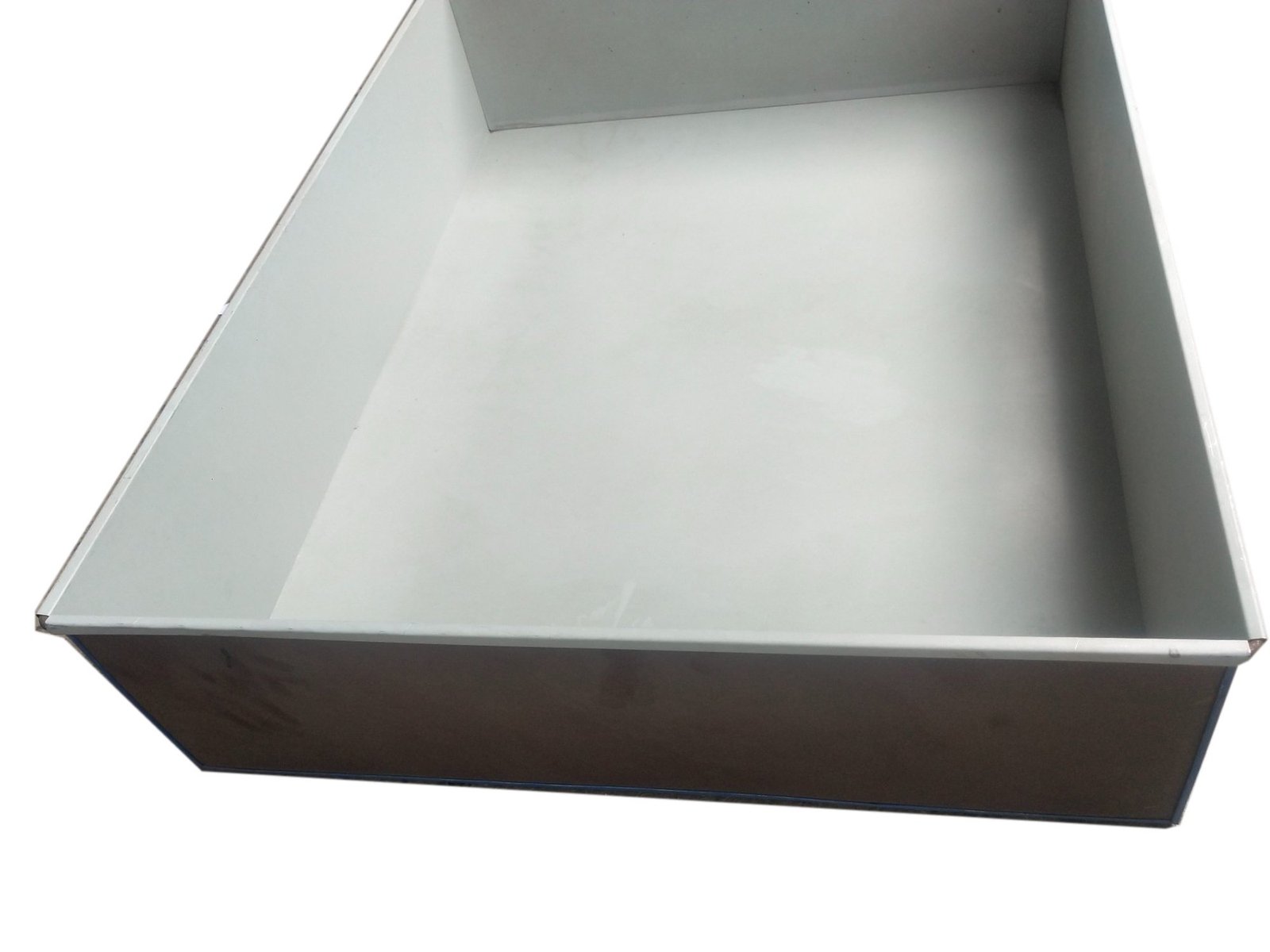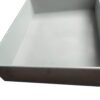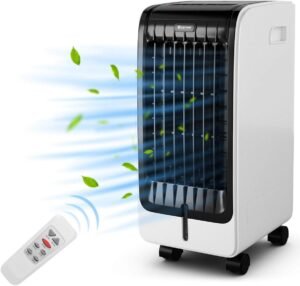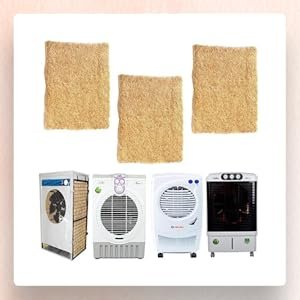What is an Air Cooler Water Tank?
An air cooler water tank is an integral component of an evaporative cooler, which is a popular device used for cooling indoor spaces in arid and semi-arid climates. This tank holds water that is crucial for the cooling process. The principle behind evaporative cooling relies on the natural phenomenon of evaporation, wherein water absorbs heat from the air and subsequently lowers the temperature. Understanding the function and significance of the air cooler water tank is essential for optimizing the efficiency of the cooling system.
Within an evaporative cooler, the air cooler water tank serves as a reservoir that supplies water to the cooling pads. These pads are strategically designed to absorb water, providing a larger surface area for evaporation. As warm air is drawn into the cooler, it passes over these damp pads, where the heat from the air causes the water to evaporate. This evaporation process extracts warmth from the air, resulting in cooler air being circulated back into the living space. Hence, the water tank plays a pivotal role by continually replenishing the moisture levels in the pads and sustaining the evaporation cycle.
In addition to providing water for the cooling pads, some air cooler water tanks are designed with features that enhance their functionality. These may include built-in filters that improve air quality or adapters that facilitate easy water refilling. Thus, the air cooler water tank not only enables the efficient operation of the cooling system but also contributes to creating a healthier indoor atmosphere. Ultimately, the maintenance of the water tank plays an important role in ensuring optimal performance and longevity of the evaporative cooler, underlining its significance in the overall cooling mechanism.
Types of Air Cooler Water Tanks
When it comes to selecting an air cooler, understanding the types of water tanks available is crucial for optimal performance and functionality. Broadly, air cooler water tanks can be categorized into two main types: fixed water tanks and removable water tanks. Each serves specific purposes and comes with distinct design features that influence their usability.
Fixed water tanks are permanently attached to the air cooler unit, integrating seamlessly into the overall design. These tanks typically have a larger capacity, making them suitable for extended use without frequent refills. Their fixed nature often results in a more compact unit, which can be advantageous in space-constrained environments. However, one potential drawback is that maintaining and cleaning fixed tanks can be more challenging, as they require disassembly of the unit for thorough access.
In contrast, removable water tanks provide flexibility and ease of use. These tanks can be easily detached for cleaning, refilling, and maintenance, enhancing user convenience. Many users prefer removable tanks for their simplicity, as they allow for quick changes to the water levels without the hassle of entire unit disassembly. Additionally, these tanks are often lighter, making them easier to manage during maintenance tasks. However, they might have a smaller capacity, which may necessitate more frequent refills depending on usage.
Ultimately, the choice between fixed and removable air cooler water tanks should align with the consumer’s specific needs and circumstances. Factors such as available space, maintenance preferences, and anticipated usage patterns will play vital roles in determining the most suitable type. Assessing these variables can ensure that the selected air cooler effectively meets cooling requirements while providing ease of operation.
Maintenance and Care for Your Air Cooler Water Tank
The air cooler water tank plays a crucial role in the performance and efficiency of an evaporative cooler. Proper maintenance and care are essential to ensure that the water tank operates effectively and prolongs the lifespan of the unit. Regular cleaning is the first step in maintaining the water tank. This should be done at least once a month, especially during peak usage seasons. Empty the tank and scrub it with a soft brush and a mixture of mild detergent and water. Rinse thoroughly to remove any soap residue, as remnants can affect water quality and cooler efficiency.
Inspecting the water tank for leaks or damages is another critical maintenance task. Check the tank and its connections regularly for any signs of wear and tear. A small leak can lead to water wastage and decreased performance. If you notice cracks or holes, consider replacing the water tank or sealing any minor damages with a waterproof adhesive. Additionally, check the inlet and outlet pipes for blockages that may restrict water flow, which can contribute to inefficient cooling.
Water treatment methods should not be overlooked. Using water treatment chemicals specifically designed for air coolers can help prevent bacterial growth, algae formation, and mineral build-up. This not only improves water quality but also enhances overall cooling performance. Regularly changing the water in the tank is essential, as standing water can lead to odor and contamination.
Common problems that may arise in air cooler water tanks include poor cooling performance and inappropriate water levels. To troubleshoot, monitor the water level and ensure the float valve functions correctly. If you encounter persistent issues, it may be necessary to consult a professional for further diagnosis and resolution. By following these simple maintenance practices, you can ensure that your air cooler water tank operates efficiently and effectively, providing optimal cooling for your space.
Understanding the Impact of Water Quality on Cooling Performance
The quality of water used in an air cooler’s water tank plays a pivotal role in its overall cooling performance. Ensuring the right balance of minerals and cleanliness in the water can significantly enhance the efficiency and longevity of the cooling system. Primarily, the distinction between hard water and soft water is crucial. Hard water, which contains elevated levels of minerals like calcium and magnesium, can lead to mineral buildup within the cooler. This buildup can clog the water distribution system and hinder airflow, ultimately reducing the unit’s cooling efficiency.
In contrast, soft water, which has fewer minerals, tends to create less scale buildup. However, soft water can also have its challenges, particularly if it is treated with sodium. The residual sodium can affect the cooling pad’s effectiveness and could lead to other undesired effects if not monitored. Regular water changes are vital in maintaining optimal water conditions. Stagnant water promotes the growth of microorganisms and algae, which can affect air quality and the cooler’s operation. Therefore, changing the water every few days, especially during peak usage, is recommended to ensure that the cooler operates efficiently.
Cleaning the tank periodically is essential to minimize the risks associated with poor water quality. It is critical to remove any sediments or residues that accumulate at the bottom of the tank, as they can harbor bacteria and fungi, creating a breeding ground for unwanted growth. To ensure that air coolers function efficiently, consider using filtered water or distilled water. These options not only help in lowering mineral content but also provide cleaner, safer water for the cooling process. Maintaining water quality through these practices not only enhances performance but also extends the life of the air cooler.
Choosing the Right Air Cooler Water Tank for Your Needs
When selecting the appropriate air cooler water tank, several critical factors must be considered to ensure optimal performance and satisfaction. The first aspect to evaluate is the tank capacity. This capacity should align with the size of your air cooler and the area intended for cooling. An inadequately sized tank may lead to frequent refills and suboptimal cooling efficiency, while an oversized tank can be unnecessarily cumbersome and may occupy valuable space.
Compatibility with your existing air cooler unit is another significant criterion. Not all water tanks are universally compatible, which means you should verify that the tank fits well with your current model. This may involve checking product specifications, dimensions, or even manufacturer recommendations, as a compatible setup ensures smooth functionality and longevity.
Installation requirements can also influence your choice of water tank. Assess the ease of installation, as some models may require professional help or additional tools, increasing the initial expenditure. It is prudent to choose a tank that not only integrates effortlessly with your existing air cooler unit but also matches your installation capabilities, thereby enabling you to avoid unnecessary complications.
Budget considerations are equally essential when selecting an air cooler water tank. Prices can vary significantly based on size, material, and brand. It is advisable to establish a budget before exploring options, allowing for a more structured shopping experience. Prioritizing quality alongside affordability will ensure that you make a wise investment that meets your cooling needs effectively.
Finally, leveraging resources such as online customer reviews, expert opinions, and comparison tools can significantly aid in your decision-making process. These resources can provide valuable insights into the performance and reliability of various models, empowering you to make an informed choice tailored to your specific requirements.
| Air Cooler Brand Name | Aisen, Arctic, Bajaj, Blue Star, Blueberry, Butterfly, Candes, Cello, Cospex, Croma, Crompton, Crompton Greaves, Cruiser, CRUISER C.S.O., Daenyx, Godrej, Greenchef, HAVAI, Havells, Hindware, Hindware Snowcrest, Impex, Intex, Kelvinator, Kenstar, Khaitan, Krish, Lazer, Lifelong, Livpure, Maharaja Whiteline, Mccoy, Onida, Orient, Pigeon, Polycab, Power Guard, Raptas, Sansui, Singer, Sunflame, Symphony, T-Series, Thomson, Usha, V-Guard, Varna, Vego, Venus, Voltas, Wybor |
|---|---|
| Air Cooler Capacity | 21 to 60 liters, 40 to 80 liters, 60 to 85 liters, Below 20 liters |
| Air Cooler Type | Desert, Personal, Room, Tower, Window |
| Technician Type | With Technician, Without Technician |
Only logged in customers who have purchased this product may leave a review.
Related products
-
Air Cooler Parts
Air Cooler Water Pump
₹910.00 – ₹1,510.00 Select options This product has multiple variants. The options may be chosen on the product pageRated 0 out of 5 -
Air Cooler Parts
Air Cooler Remote Control
₹650.00 – ₹1,250.00 Select options This product has multiple variants. The options may be chosen on the product pageRated 0 out of 5 -
Air Cooler Parts
Air Cooler Cooling Pads
₹1,560.00 – ₹2,160.00 Select options This product has multiple variants. The options may be chosen on the product pageRated 0 out of 5 -
Air Cooler Parts
Air Cooler Fan Motor
₹2,340.00 – ₹2,940.00 Select options This product has multiple variants. The options may be chosen on the product pageRated 0 out of 5







Reviews
There are no reviews yet.